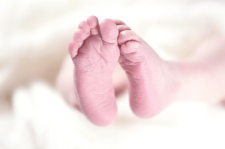18 Years Later: First Update on Children Born Using 3-person IVF Precursor

On October 26, an Associated Press story broke with the headline, “The Kids are All Right: Children with 3-Way DNA are Healthy.” Riding the wave of recent controversies surrounding 3-person in-vitro fertilization (IVF) in Mexico and the Ukraine, the widely syndicated article plainly misrepresents the source study, which as we shall see, is not at all certain of the reliability of its results.
On October 24, Reproductive BioMedicine Online published the first follow-up study of children born in the late 1990s and early 2000s using a precursor to 3-person IVF known as cytoplasmic transfer. Developed for age-related infertility, this technique, also known as ooplasmic transfer or transplantation, involves injecting mitochondria-rich cytoplasm from donor eggs into the eggs of intending mothers prior to fertilization. Fertility doctors used this experimental technique in human subjects without clinical trials, with at least two dozen babies born as a result. In 2001, researchers from St. Barnabas Medical Center in New Jersey published a study announcing live births resulting from this procedure, and claiming the world’s “first case of human germline modification.”
Scientists, medical professionals, and public interest advocates raised a number of serious concerns at the time, ranging from the children’s increased risk of severe mitochondrial disease resulting from mitochondrial heteroplasmy to ethical concerns about human inheritable genetic engineering. Shortly after the study was published, the U.S. FDA halted the procedure, citing lack of evidence of safety and efficacy and requiring clinics to seek the agency’s approval to continue. No such request was made at the time, and no formal studies to track the effects of this technique upon the resulting children were conducted.
The recent Reproductive BioMedicine Online study documents an attempt to follow up on the seventeen children, now ranging in age from 13-18, born as part of the St. Barnabas Medical Center research cited above. The study is inconclusive due to a number of serious limitations, including the fact that it is based entirely on limited email surveys completed only by parents. None of the children participated in the survey, nor were they subject to any follow-up testing. In fact, only one of them has been informed of their participation in this experimental procedure. In addition, the parents of quadruplets that represent 25% of the total number of children never replied to the survey.
The authors are open about the flaws of their study, writing that it “is limited because the information from the quadruplet delivery is essential for providing firm conclusions,” and that their findings “are based on subjective assessment criteria and no standardized instruments were used.” In the end, the researchers conclude that they were unable to discern an effect of cytoplasmic transfer on the children, but attach the clear disclaimer, “but the power of the investigation was low.”
In light of this, it is disappointing that media coverage of the study was so unbalanced and celebratory. Mostly syndications of the Associated Press story mentioned above, it both severely downplayed the study’s frankly-stated limitations, and misconstrued the authors’ tentative conclusion as evidence that not only this banned technique but somehow all forms of mitochondrial manipulation are safe.
Previously on Biopolitical Times:
- 3-person IVF and Infertility: What Kind of Slippery Slope Is This?
- 3-Person IVF Breaking News: Where Are the Advocates for the Public Interest?
- Dangers of an Unscientific Policy Process: Why the UK's legalization of "three-person babies" should not be the model for CRISPR
- The Case Against Public Investment in Reproductive Genetic Modification
- Eight Misconceptions about “Three-Parent Babies”
- Key Questions About the Social and Ethical Implications of Nuclear Genome Transfer or “3-Person IVF” Techniques
- "World's First GM Babies Born": 12-Year-Old Article Continues to Cause Confusion
Image via Pixabay



